Mil HIND E

Eduard Limited Edition Kit, 1/48 scale
S
u m m a r y |
| Catalogue Number and Price: |
Eduard Kit No. EDK11163 - Mil HIND E Limited Edition Kit
USD$105.00 plus shipping available online from Eduard
GBP£66.80 EU Price (£55.62 Export) plus shipping available online from Hannants
|
| Scale: |
1/48 |
| Contents and Media: |
309 grey injected moulded parts, 18 clear parts, 8 grey resin parts, 150 photoetch parts, 1 small acetate film, decals, a reference book and instructions. |
| Review Type: |
FirstLook. |
| Advantages: |
Crisp and detailed kit (Zvezda) with a wealth of extras. Amazing choice of schemes. A great reference book included with numerous photos of the aircraft included in the schemes. |
| Disadvantages: |
The only possible disadvantage is that the excellent reference book only has Czech text but nothing that Google Translate can’t fix. |
| Conclusion: |
A box full of quality kit and many extras. All Czech aircraft but what a range of schemes. Great value. |
Reviewed by David Couche

The Mil Mi-24 (NATO reporting name: Hind) is a large helicopter gunship, attack helicopter and low-capacity troop transport with room for eight passengers. It is produced by Mil Moscow Helicopter Plant and was introduced by the Soviet Air Force in 1972. The helicopter is currently in use by 58 countries.
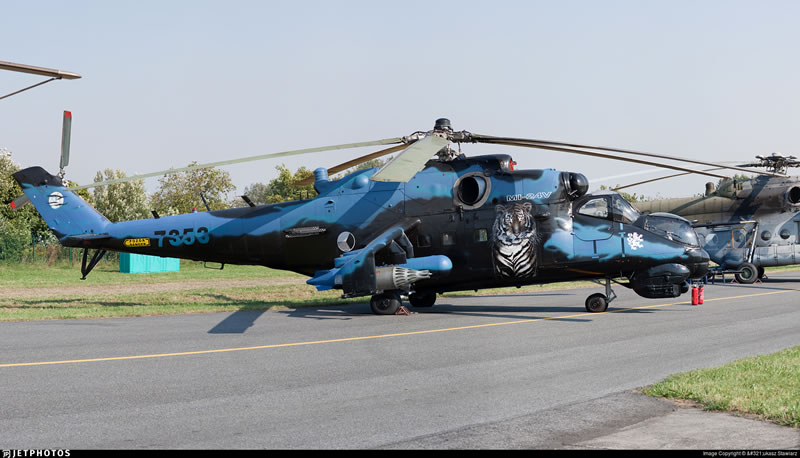
In NATO circles, the export versions, Mi-25 and Mi-35, are denoted with a letter suffix as "Hind D" and "Hind E". Soviet pilots called the Mi-24 the "flying tank", a term used historically with the famous World War II Soviet Il-2 Shturmovik armored ground attack aircraft. Other common unofficial nicknames were "Galina" (or "Galya"),and "Crocodile", due to the helicopter's camouflage scheme, and "Drinking Glass", because of the flat glass plates that surround earlier Mi-24 variants' cockpits.

During the early 1960s, it became apparent to Soviet designer Mikhail Mil that the trend towards ever-increasing battlefield mobility would result in the creation of flying infantry fighting vehicles, which could be used to perform both fire support and infantry transport missions. The first expression of this concept was a mock-up unveiled in 1966 in the experimental department of the Ministry of Aircraft's factory number 329, where Mil was head designer. The mock-up designated V-24 was based on another project, the V-22 utility helicopter, which never flew. The V-24 had a central infantry compartment that could hold eight troops sitting back-to-back, and a set of small wings positioned to the top rear of the passenger cabin, capable of holding up to six missiles or rockets and a twin-barrelled GSh-23L cannon fixed to the landing skid.

As a combination of armoured gunship and troop transport, the Mi-24 has no direct NATO counterpart. While the UH-1 ("Huey") helicopters were used by the US in the Vietnam War either to ferry troops, or as gunships, they were not able to do both at the same time. Converting a UH-1 into a gunship meant stripping the entire passenger area to accommodate extra fuel and ammunition and removing its troop transport capability. The Mi-24 was designed to do both, and this was greatly exploited by airborne units of the Soviet Army during the 1980–89 Soviet–Afghan War. The closest Western equivalent was the American Sikorsky S-67 Blackhawk, which used many of the same design principles and was also built as a high-speed, high-agility attack helicopter with limited troop transport capability using many components from the existing Sikorsky S-61. The S-67, however, was never adopted for service. Other Western equivalents are the Romanian Army's IAR 330, which is a licence-built armed version of the Aérospatiale SA 330 Puma, and the MH-60 Direct Action Penetrator, a special purpose armed variant of the Sikorsky UH-60 Black Hawk.

Over the years 2.648 of these aircraft have been produced.
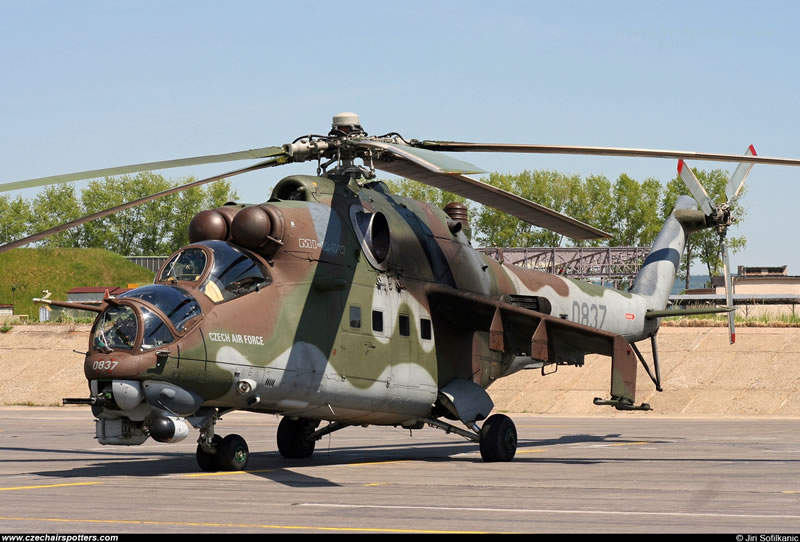
The Czech Air Force flew the Hind D and the Mi-24V type, (NATO code HIND-E), is another advanced version that came from the Mi-24D type. The major change is in the use of a STURM-V device, which is the modern and more efficient navigation system, and the use of 9M 114 (AT-6 SPIRAL) anti-tank guided missiles, which are fired from two, cylinder containers mounted at each wing tip.
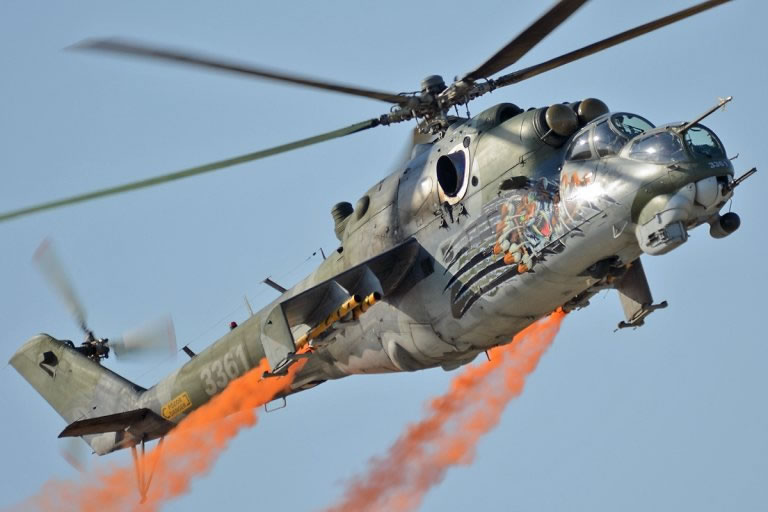
The equipment of the helicopter was further reinforced with B-8V blocks for 20 rockets of S-8 type of 80 mm calibre, cannon containers UPK-23-250 with two-barrel cannon Gš-23L having a supply of 250 cartridges, universal weapons containers GUV9A with the mounting prepared for installation of automatic grenade launchers 9-A-800 of 30 mm calibre, or one four-barrel machine gun 9-A-624 of 12.7 mm calibre, and two four-barrel machine guns 9-A-622 of 7.62 mm calibre.
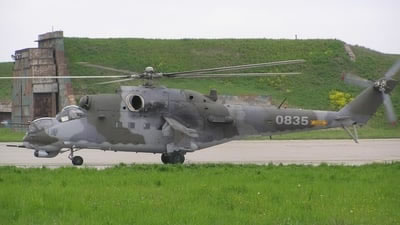
The Czech air Force retired their Hind in 2023 and transferred them to the Ukraine Air Force.
*Text courtesy of Wikipedia
In 2021 Eduard released the Limited Edition of the Hind D after commissioning the sprues from Zvezda for their 1/48 Hind Mi-24 helicopter. They must have secured more sets than they originally required, and this has seen them now release the Limited Edition Hind E kit.
You get a large and weighty box with your purchase. When opened, it is full to the brim with lots of Eduard goodies. Firstly, there’s the wonderful Zvezda kit of the Mi-24, full of detail and excellent engineering. Then, there are the Eduard extras, four photo-etched (PE) metal frets – three of these are pre-coloured – supplying a host of detail for the cockpits as well as the exterior. As well as the PE, there is also a small cache of resin items (sensors, wheels and chaff/flare dispensers), and pre-cut tape masks for the wheels, cockpit glazing and windows. As usual there is a wonderful instruction books with a choice of 8 quite different schemes and an excellent reference book on each of these Czech Hinds in the form of a high-quality, 94-page softback reference book entitled “Vé?ka…”, written by the former commander of the Czech Hind force, Jaroslav Špa?ek. The text is in Czech but there are many photos and lovely colour profiles of each of the 8 schemes supplied and are highly useful, regardless.
Thankfully, in my case, I have the Google Translate app which translates into English so easily and can be stored as a photo or text.
There are 6 sprues of pale grey injected moulded parts and one sprue of clear parts. Details for each of the sprues are:
Sprue A

This sprue is the grey plastic sprue and has 2 parts on it, with these being the fuselage halves. The detail is good with crisp, recessed panel lines and some raised detail where required, enough to make the surface interesting.
Sprue B
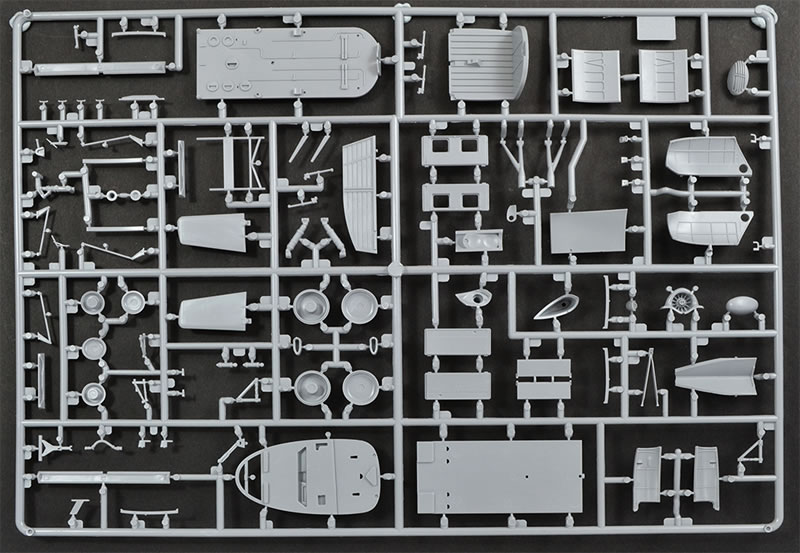
This sprue is a busy one and has 95 parts of which 13 are not used on this variant. This sprue contains the main pieces of the rear cabin including the floor, roof/engine mount, the front and rear walls. Many small parts for both the front cockpits and the rear cabin are here as well. The last main group of this sprue are the undercarriage legs ad cabin doors. All parts exhibit crisp detail both raised and recessed, and when constructed they will add a visual complexity to the model. The kit does give you the option of having the cabin door posed open if desired.
Sprue C
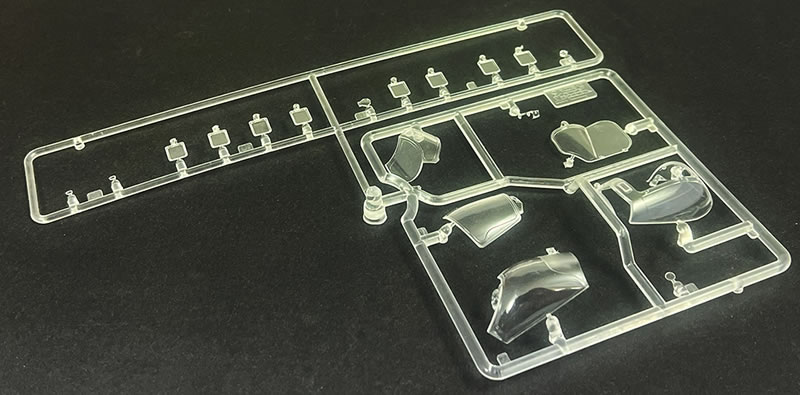
Sprue C is the clear sprue which contains 18 parts. The parts a very clear with some very nice frame detail. The canopy is made up of 5 larger parts which enables you to have it open or closed. With both the detail from kit parts as well as the mass of photoetched parts for the cockpit, having it open would be more than likely the chosen option. The remaining parts are either small windows or lights.
Sprue D
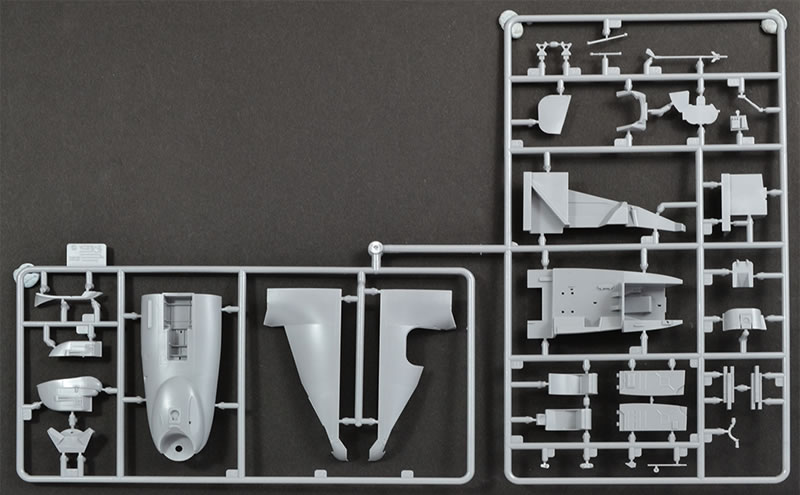
Here on Sprue D, we have 32 parts, and only 2 are not required. On this we have the cockpit interior and exterior panels, along with the lower panel of the front of the fuselage. There are several smaller detail parts for various places on here as well.
Sprue E
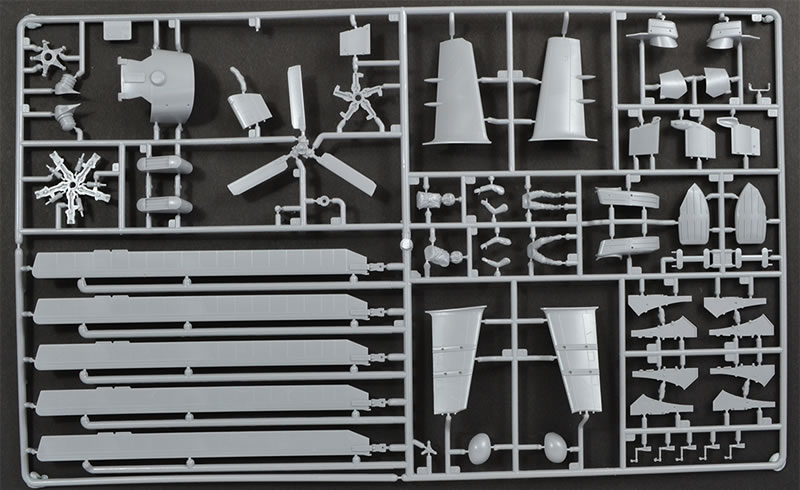
An interesting sprue with 58 parts on it with 9 which won’t be used. Of main interest is the set of rotor blades, the tail rotor, rotor heads, winglets, weapons pylons and some other assorted parts.
Sprue F
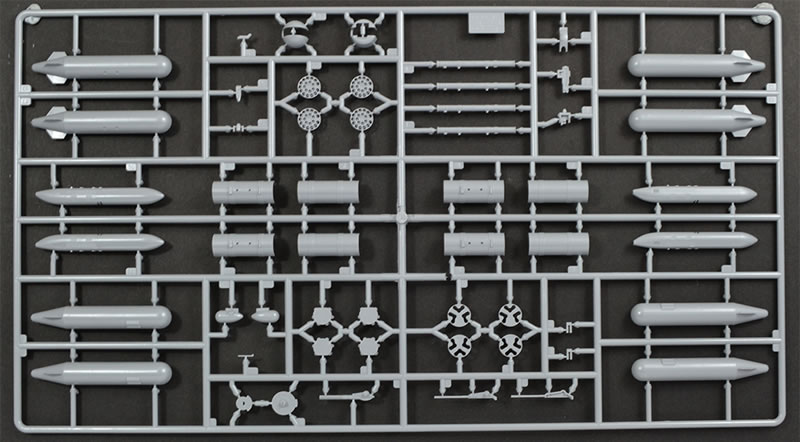
Sprue F gives you 54 parts with 6 not used for this version. This is the armament sprue. Parts are there to make 4 drop tanks, 4 of the S-8 rocket pods with 20 rounds, 2 gun pods (UPK-23 or GUV) and a pair of AT-6 Spiral anti-tank missiles for the outer hardpoint. Detail is excellent on these parts.
Sprue G

Lastly, we have Sprue G holding 67 parts with only 4 parts not being used here. This sprue tree gives us the engine parts to construct reasonable versions of either a V?-117V?? or VK-2500 engine. For those more inclined, some further detail with wiring etc will give you a great open version of the Hind E. Your bonus book will be of great value here.
Resin Parts
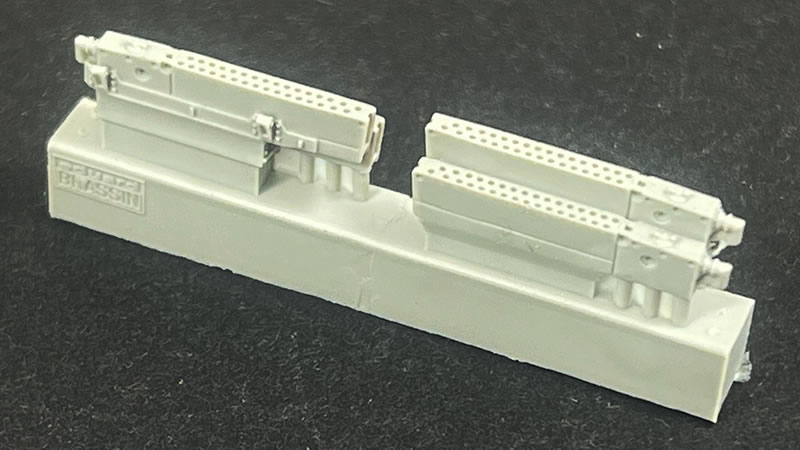
This kit contains a small pack of resin parts which provides a lovely, detailed set of wheels, sensors and chaff/flare dispensers.
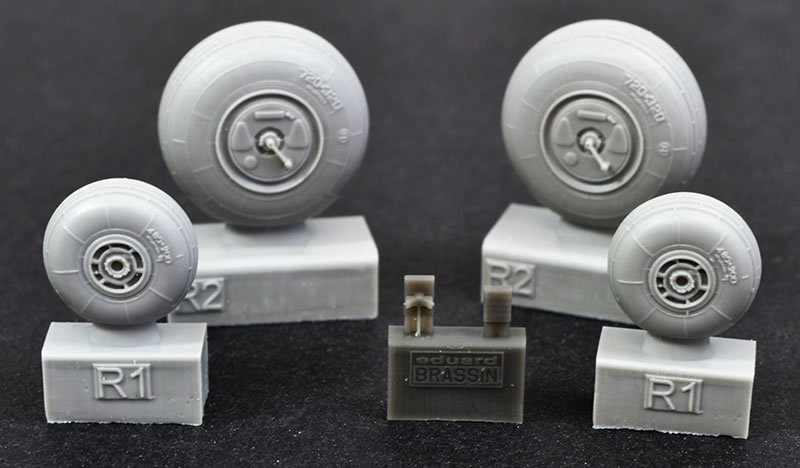
These add a nice degree of fine detail to the completed Hind.
Photo-Etched Parts
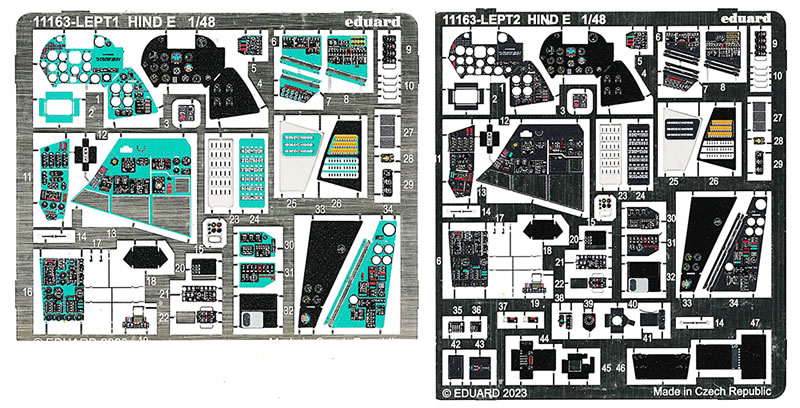
There are 4 standardish sized sheets of Eduard photo-etch with this kit. Two of these are coloured etch for the cockpit interior, with these give you the option of the colours for the cockpits as the Czech Hind had the blue-grey and the darker grey in different machines with each variant covered by multiple schemes.
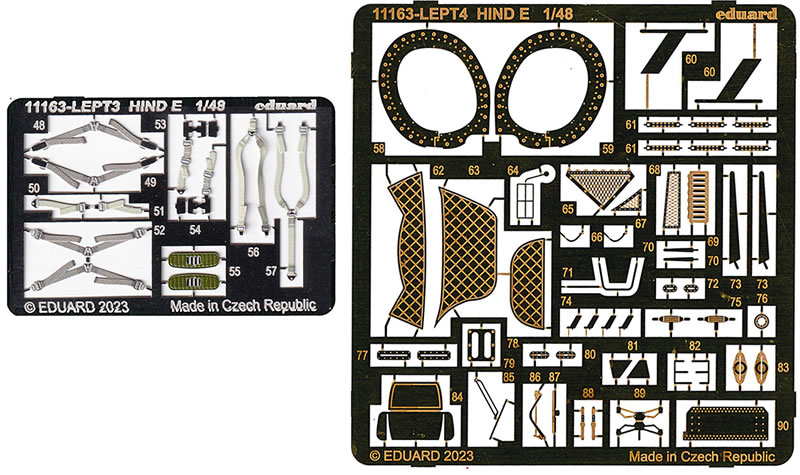
There is a smaller sheet with coloured seat belt for both the cockpit as well as for the cabin troop seating. The final sheet is a plain brass sheet with a number of exterior parts to improve the surface detail.
Decals and Instructions
The instructions for the kit is the usual high quality construction booklet. Detailed painting and decaling instructions, whilst in black and white, are supplied. Colour call outs are for Gunze Aqueous, Mr Color and Mission Models paint ranges. The painting scheme page has callouts for each of these brands. The decals appear to be in perfect register with one large sheet of data stencils and a further large sheet for 8 options, that cover a wide range of aircraft from line machines, through to Tiger Meets, a Farewell scheme and a Royal International Air Tattoo (RIAT) aircraft. There’s really something for everybody.
The aircraft schemes are below. I’ve found photos of nearly all in the Internet but they are certainly in your bonus book, some are above, the rest are here.
-
Scheme A: 7353, 221 Squadron, 22 Helicopter Base, Nám?št nad Oslavou, Last Flight of the ‘Night Tiger’, May 27, 2015
-
Scheme B: 0834, 2 Squadron, 11 Helicopter Regiment, Lìn? airfield, CIAF Hradec Králové, July 17, 1993 (above)
-
Scheme C: 0815, 331 Attack helicopter Squadron, 33 helicopter Base, P?erov, NATO Tiger Meet Beja, Portugal, June 28-July 9, 2002
-
Scheme D: 3370/PP-K/EV953, 221 Helicopter Squadron, 22 Helicopter Base, Nám?št and Oslavou, RIAT Fairford, UK, July 14-16, 2015 (above)
-
Scheme E: 0786, 2 Squadron, 11 Helicopter Regiment, Plze?-Bory airfield, CSIAF Bratislava, Slovakia, September 5, 1992
-
Scheme F: 0837, 231 Attack helicopter Squadron, 23 helicopter Base, P?erov, last flight, route P?erov-Želátovice, December 12, 2005 (above)
-
Scheme G: 3361, 221 Helicopter Squadron, 22 helicopter Base, Nám?št and Oslavou, NATO Tiger Meet, Cambrai-Épinoy, France, May 9-20, 2011
-
Scheme H: 0835, 331 Attack Helicopter Squadron, 33 Helicopter Base, P?erov, March, 2002
This kit gives so much bang for your buck….or whatever currency you’re using. Eduard have a winner here for the helicopter enthusiast combining the excellently detailed Zvezda Hind E sprue sets with a range of their own etch, resin and decal products, enabling is to be able to create a highly detailed model when completed.
And let’s not forget the excellent reference book that comes in the kit.
I can’t wait to get stuck into this build, but the hard part is which of those schemes to do or do I need to find another Zvezda Hind E to use up leftover etch and decal schemes.
Highly Recommended.
Many thanks to my retirement fund for the review sample.
Thanks to Eduard for the sample
Review Text Copyright © 2024 by David Couche
Page Created 11 March, 2024
Last updated
11 March, 2024
Back to HyperScale Main Page
Back to Reviews Page |
